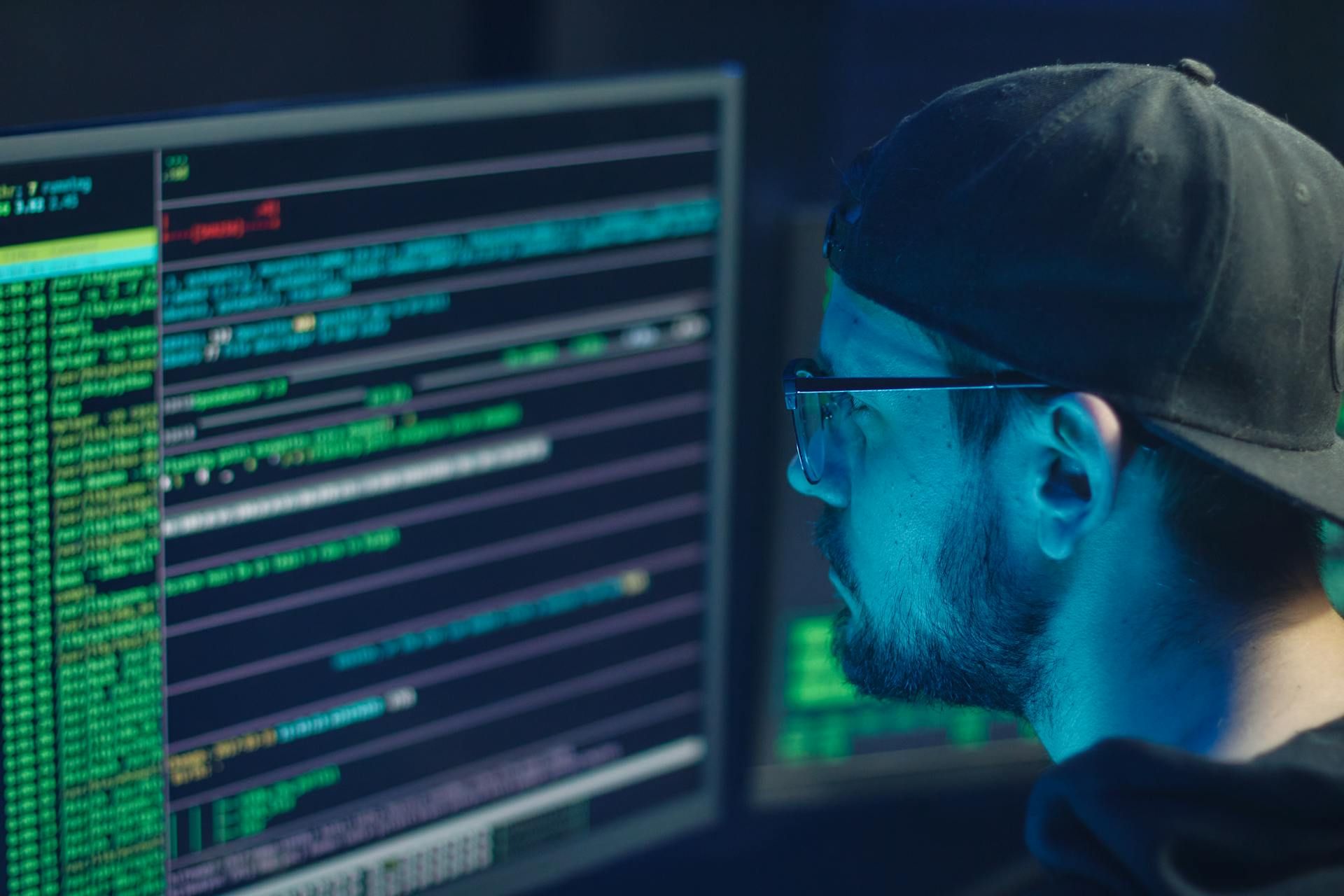
How to Recognize Deepfake Scams in 2025
In 2025, the landscape of digital fraud has been dramatically reshaped by the proliferation of deepfake technology. Once a niche tool requiring significant technical expertise, deepfakes have become accessible to a broader audience due to advancements in artificial intelligence and the availability of user-friendly platforms. This democratization has lowered the barriers for cybercriminals, enabling them to create hyper-realistic videos, audio clips, and images that can convincingly impersonate individuals (Trend Micro). The implications of this technology are profound, as it is increasingly used in fraudulent schemes ranging from impersonating CEOs in business email compromise scams to creating fake customer service representatives. The integration of deepfakes with social engineering tactics has further amplified their effectiveness, allowing scammers to craft highly personalized and seemingly authentic messages (McAfee). As deepfake technology continues to evolve, it poses significant challenges for detection and prevention, necessitating a concerted effort from governments, technology companies, and cybersecurity experts to mitigate its risks (Artificial Intelligence Review).
The Evolution of Deepfake Technology in Fraud
Increasing Accessibility of Deepfake Tools
Deepfake technology has become increasingly accessible due to advancements in artificial intelligence and the proliferation of user-friendly tools. In 2025, scammers no longer require advanced technical knowledge to create convincing deepfake content. Platforms offering pre-trained generative adversarial networks (GANs) and step-by-step tutorials have lowered the barrier to entry for cybercriminals. These tools enable the creation of hyper-realistic videos, audio clips, and images that can impersonate individuals with alarming accuracy. For instance, reports indicate that AI tools capable of generating deepfakes are now widely available on underground marketplaces, often bundled with tutorials for as little as $30 (Trend Micro).
This democratization of deepfake technology has fueled its use in fraudulent schemes, such as impersonating CEOs in business email compromise (BEC) scams or creating fake customer service representatives to deceive victims. Unlike earlier iterations, modern deepfake tools can replicate subtle facial expressions and voice inflections, making detection more challenging.
Integration with Social Engineering Tactics
Deepfakes have become a powerful weapon when combined with social engineering tactics. Criminals are now using large language models (LLMs) trained on publicly available data, such as social media posts, to mimic an individual’s writing style, tone, and knowledge. This allows scammers to craft highly personalized messages that appear authentic. For example, a deepfake video of a company executive might be paired with an email urging employees to transfer funds to a fraudulent account (McAfee).
Social engineering scams leveraging deepfakes are not limited to corporate targets. Scammers are also exploiting individuals by creating fake videos of loved ones in distress, requesting urgent financial assistance. These scams are particularly effective because they exploit emotional vulnerabilities, making victims less likely to question the authenticity of the content.
Evolution of Fraudulent Use Cases
Bypass-KYC-as-a-Service
One of the most concerning applications of deepfake technology is its use in bypassing Know Your Customer (KYC) protocols. Scammers are leveraging deepfake videos and images to impersonate individuals during identity verification processes. This practice, often referred to as “Bypass-KYC-as-a-Service,” has gained traction in underground markets. It is sustained by the availability of leaked personally identifiable information (PII) from ransomware attacks and unintentionally exposed biometrics (Trend Micro).
For example, a deepfake video might be used to mimic a customer’s face during a live video verification call, enabling criminals to open fraudulent accounts or access restricted services. Financial institutions and online platforms are particularly vulnerable to this type of fraud, as traditional verification methods are often insufficient to detect deepfakes.
Celebrity Impersonation Scams
Deepfake technology has also been weaponized to impersonate high-profile individuals, such as celebrities and public figures. These scams often involve creating fake videos or audio clips of well-known personalities endorsing fraudulent investment schemes or products. For instance, deepfakes of Elon Musk have been used to promote cryptocurrency scams, resulting in significant financial losses for victims (Forbes).
The convincing nature of these deepfakes makes them highly effective in manipulating public trust. Victims are more likely to believe and act on a message if it appears to come from a trusted figure. This has led to a surge in fraud cases, with global losses from deepfake-related scams projected to reach $40 billion by 2028 (Forbes).
Challenges in Detection and Prevention
Advancements in Generative Models
The rapid evolution of generative models has made deepfakes increasingly difficult to detect. Modern GANs are capable of producing hyper-realistic outputs that can fool even advanced detection systems. These models can simulate natural lighting, shadows, and facial movements, making it nearly impossible to distinguish real content from fake without specialized tools (Deep Media).
Moreover, the arms race between deepfake generation and detection technologies has intensified. While researchers are developing new algorithms to identify deepfakes, criminals are simultaneously improving their techniques to evade detection. This constant back-and-forth has created a challenging environment for cybersecurity professionals.
Regulatory and Ethical Considerations
The rise of deepfake fraud has also highlighted the need for robust regulatory frameworks. In 2025, many countries are grappling with the ethical and legal implications of deepfake technology. While some jurisdictions have introduced laws to criminalize the malicious use of deepfakes, enforcement remains a challenge due to the global nature of cybercrime (Artificial Intelligence Review).
Additionally, the ethical considerations surrounding deepfake detection tools have come under scrutiny. For instance, some argue that the widespread use of biometric data for detection purposes could infringe on individual privacy rights. Balancing the need for security with the protection of personal freedoms is a complex issue that requires careful deliberation.
The Role of AI in Countering Deepfake Fraud
Artificial intelligence is playing a crucial role in the fight against deepfake fraud. Advanced detection systems, such as those based on machine learning algorithms, are being developed to identify subtle inconsistencies in deepfake content. For example, some tools analyze pixel-level anomalies or irregularities in audio frequencies to flag potential deepfakes (Proofpoint).
In addition to detection, AI is being used to develop proactive measures, such as watermarking genuine content to verify its authenticity. These technologies aim to create a digital “fingerprint” for legitimate media, making it easier to identify tampered content. However, the effectiveness of these solutions depends on widespread adoption and standardization across industries.
Future Trends and Implications
Increased Use of Automation
As deepfake technology continues to evolve, automation is expected to play a larger role in fraud schemes. Scammers are likely to integrate deepfake generation with automated systems to scale their operations. For instance, AI could be used to generate thousands of personalized phishing emails, each accompanied by a deepfake video or audio clip tailored to the recipient (McAfee).
Impact on Elections and Public Discourse
The potential impact of deepfakes extends beyond financial fraud. In 2025, deepfakes are increasingly being used to manipulate public opinion and disrupt democratic processes. For example, fake videos of political candidates making controversial statements could be released during election campaigns to sway voter sentiment. This has raised concerns about the integrity of information in the digital age (Proofpoint).
Collaboration Between Stakeholders
Addressing the deepfake threat requires collaboration between governments, technology companies, and cybersecurity experts. Initiatives such as public awareness campaigns and industry partnerships are essential to mitigate the risks associated with deepfake fraud. For instance, some organizations are working on developing open-source detection tools to make anti-deepfake technology more accessible (Artificial Intelligence Review).
By staying informed and adopting proactive measures, individuals and organizations can better protect themselves against the evolving threat of deepfake fraud.
Common Types of Deepfake Scams
1. Impersonation Scams Using Deepfake Videos
Deepfake technology has enabled scammers to impersonate individuals convincingly, often targeting victims with fabricated video calls or messages. For example, scammers may pose as family members, friends, or authority figures, requesting urgent financial assistance. These impersonations are highly realistic, leveraging AI to mimic the voice, facial expressions, and mannerisms of the targeted individual. A recent report highlighted that scammers can create deepfake videos for as little as $5 in under 10 minutes (McAfee Blog). This low cost and ease of access have made impersonation scams one of the most common deepfake fraud tactics.
2. Deepfake Investment Scams
Scammers are increasingly using deepfake videos to promote fraudulent investment opportunities. These scams often feature AI-generated videos of well-known personalities, such as business leaders or celebrities, endorsing fake investment platforms. For instance, a deepfake video of Elon Musk was used to lure victims into a high-return investment scheme, resulting in significant financial losses. In one case, an elderly man lost over $690,000 to scammers who used a deepfake video to impersonate Musk (NCOA). These scams exploit the trust associated with familiar faces to deceive victims into parting with their money.
3. Deepfake Extortion Scams
Deepfake extortion scams involve the creation of fake compromising videos or audio clips of victims, which are then used to blackmail them. Scammers often demand payment in cryptocurrency, threatening to release the fabricated content if their demands are not met. A notable case involved scammers targeting 100 Singaporean public servants, including ministers, with deepfake extortion emails demanding $50,000 in cryptocurrency (Point Predictive). These scams are particularly effective because the deepfake content appears highly realistic, making it difficult for victims to refute the claims.
4. Business Email Compromise (BEC) with Deepfakes
Deepfake-enhanced BEC scams are on the rise, targeting businesses and their employees. In these scams, fraudsters use AI-generated videos or audio to impersonate company executives during virtual meetings, instructing employees to transfer funds or share sensitive information. For example, in Hong Kong, scammers used deepfake technology to impersonate executives on Zoom calls, successfully defrauding companies of nearly $30 million (Point Predictive). These scams exploit the trust and authority associated with senior executives, making them particularly effective.
5. Deepfake Digital Arrest Scams
In digital arrest scams, fraudsters pose as law enforcement officials using deepfake videos and audio clips to manipulate victims. These scams often involve fabricated evidence, such as fake video calls from government officials, to coerce victims into paying ransoms or providing sensitive information. According to reports, over 92,000 cases of deepfake digital arrests were recorded in India in 2024, with experts warning that this trend could spread to other countries in 2025 (Point Predictive). These scams are particularly dangerous as they exploit fear and authority to isolate and manipulate victims.
Conclusion
The rise of deepfake technology in 2025 presents a formidable challenge in the realm of digital security. As deepfakes become more sophisticated and accessible, their use in scams and fraudulent activities is expected to increase, with global losses projected to reach staggering levels (Forbes). The ability of deepfakes to convincingly mimic individuals has made them a powerful tool for cybercriminals, particularly when combined with social engineering tactics. This has led to a surge in various types of scams, including impersonation, investment, and extortion schemes, which exploit the trust and authority associated with familiar faces (McAfee Blog). Addressing the threat of deepfake fraud requires a multifaceted approach, involving the development of advanced detection systems, regulatory frameworks, and public awareness campaigns. Collaboration between stakeholders is essential to safeguard individuals and organizations from the evolving threat of deepfake fraud (Artificial Intelligence Review). By staying informed and adopting proactive measures, society can better navigate the challenges posed by this rapidly advancing technology.
References
- Trend Micro, 2025, https://www.trendmicro.com/vinfo/nz/security/research-and-analysis/predictions/the-artificial-future-trend-micro-security-predictions-for-2025
- McAfee, 2024, https://www.carriermanagement.com/news/2024/12/20/269727.htm
- Artificial Intelligence Review, 2023, https://link.springer.com/article/10.1007/s10462-023-10679-x
- Forbes, 2024, Chris Westfall, https://www.forbes.com/sites/chriswestfall/2024/11/29/ai-deepfakes-of-elon-musk-on-the-rise-causing-billions-in-fraud-losses/
- McAfee Blog, 2024, https://www.mcafee.com/blogs/internet-security/state-of-the-scamiverse/



